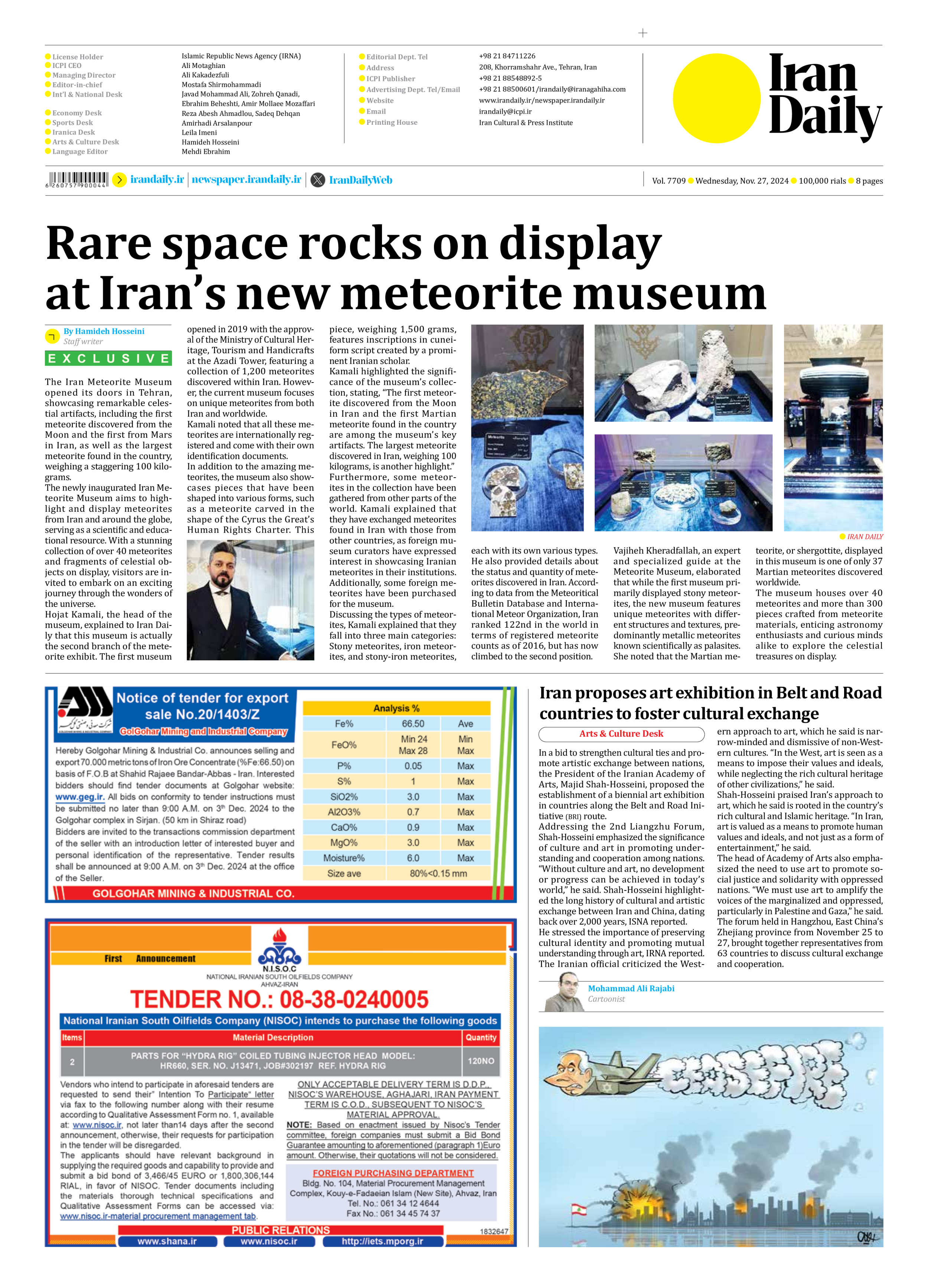
Rare space rocks on display at Iran’s new meteorite museum
By Hamideh Hosseini
Staff writer
The Iran Meteorite Museum opened its doors in Tehran, showcasing remarkable celestial artifacts, including the first meteorite discovered from the Moon and the first from Mars in Iran, as well as the largest meteorite found in the country, weighing a staggering 100 kilograms.
The newly inaugurated Iran Meteorite Museum aims to highlight and display meteorites from Iran and around the globe, serving as a scientific and educational resource. With a stunning collection of over 40 meteorites and fragments of celestial objects on display, visitors are invited to embark on an exciting journey through the wonders of the universe.
Hojat Kamali, the head of the museum, explained to Iran Daily that this museum is actually the second branch of the meteorite exhibit. The first museum opened in 2019 with the approval of the Ministry of Cultural Heritage, Tourism and Handicrafts at the Azadi Tower, featuring a collection of 1,200 meteorites discovered within Iran. However, the current museum focuses on unique meteorites from both Iran and worldwide.
Kamali noted that all these meteorites are internationally registered and come with their own identification documents.
In addition to the amazing meteorites, the museum also showcases pieces that have been shaped into various forms, such as a meteorite carved in the shape of the Cyrus the Great’s Human Rights Charter. This piece, weighing 1,500 grams, features inscriptions in cuneiform script created by a prominent Iranian scholar.
Kamali highlighted the significance of the museum’s collection, stating, “The first meteorite discovered from the Moon in Iran and the first Martian meteorite found in the country are among the museum’s key artifacts. The largest meteorite discovered in Iran, weighing 100 kilograms, is another highlight.”
Furthermore, some meteorites in the collection have been gathered from other parts of the world. Kamali explained that they have exchanged meteorites found in Iran with those from other countries, as foreign museum curators have expressed interest in showcasing Iranian meteorites in their institutions. Additionally, some foreign meteorites have been purchased for the museum.
Discussing the types of meteorites, Kamali explained that they fall into three main categories: Stony meteorites, iron meteorites, and stony-iron meteorites, each with its own various types.
He also provided details about the status and quantity of meteorites discovered in Iran. According to data from the Meteoritical Bulletin Database and International Meteor Organization, Iran ranked 122nd in the world in terms of registered meteorite counts as of 2016, but has now climbed to the second position.
Vajiheh Kheradfallah, an expert and specialized guide at the Meteorite Museum, elaborated that while the first museum primarily displayed stony meteorites, the new museum features unique meteorites with different structures and textures, predominantly metallic meteorites known scientifically as palasites.
She noted that the Martian meteorite, or shergottite, displayed in this museum is one of only 37 Martian meteorites discovered worldwide.
The museum houses over 40 meteorites and more than 300 pieces crafted from meteorite materials, enticing astronomy enthusiasts and curious minds alike to explore the celestial treasures on display.







